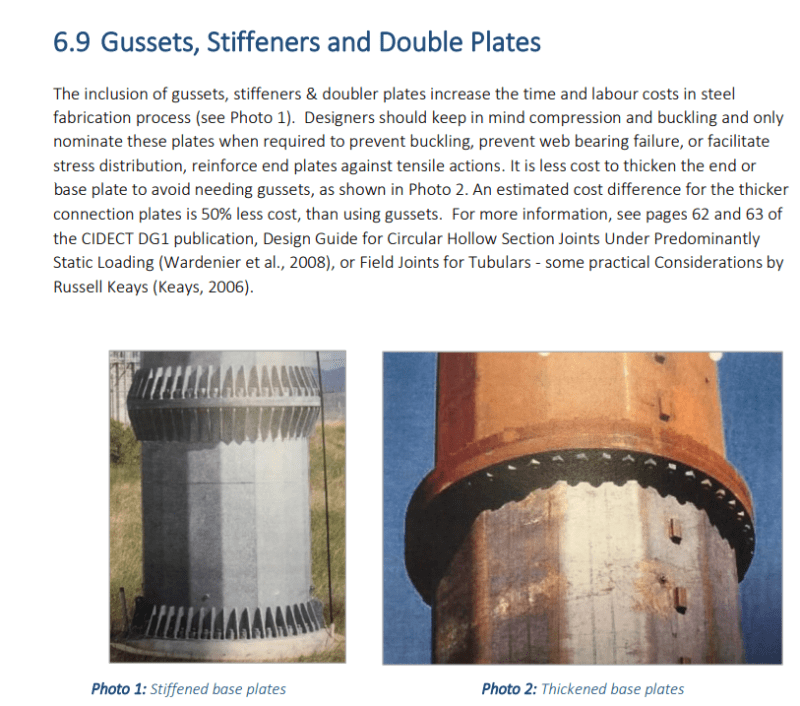I know the fixity of the column base plate has been discussed extensively, and that the pinned or fixed assumption in the model is not fully representative of what is practically occurring as there is no 100% pinned or 100% fixed connection.
However, I am wondering if there is any direct guidance from ASIC or otherwise that states a column base plate with 4 bolts inside the flange of a W section can be modelled as a true pin? Seems to me typical engineering judgement is to model this as pinned and design the anchors accordingly without necessarily considering the rotational stiffness of the base plate, foundation, and anchor bolt elongation.
Assuming generally light loading and a structure designed to carry the moments needed to model a pinned base, does anybody have any guidance that explicitly allows the base plate to be designed as a pinned? Applying moments to the anchors of moment resisting frames doesn't seem to me like standard practice, but I may be wrong.
Another way to ask my question - Is standard engineering practice to model as a pinned base and subsequently design the anchors as a true pin as well without considering rotational stiffness (assuming there are no instabilities in the frame)? If so, is this supported by anything other than engineering judgement?
However, I am wondering if there is any direct guidance from ASIC or otherwise that states a column base plate with 4 bolts inside the flange of a W section can be modelled as a true pin? Seems to me typical engineering judgement is to model this as pinned and design the anchors accordingly without necessarily considering the rotational stiffness of the base plate, foundation, and anchor bolt elongation.
Assuming generally light loading and a structure designed to carry the moments needed to model a pinned base, does anybody have any guidance that explicitly allows the base plate to be designed as a pinned? Applying moments to the anchors of moment resisting frames doesn't seem to me like standard practice, but I may be wrong.
Another way to ask my question - Is standard engineering practice to model as a pinned base and subsequently design the anchors as a true pin as well without considering rotational stiffness (assuming there are no instabilities in the frame)? If so, is this supported by anything other than engineering judgement?

